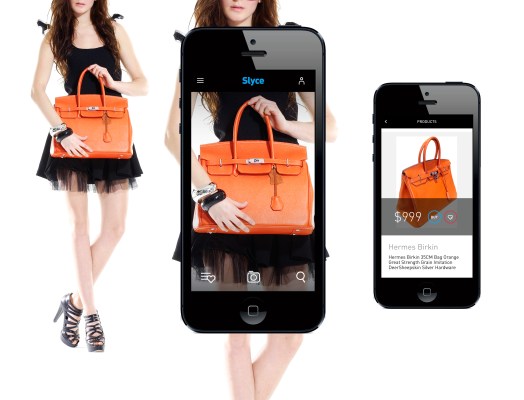Toronto-based startup Slyce has raised a new round of $10.75 million in funding, led by Beacon Securities, and including PI Financial, Salman Partners, Harrington Global and more. The company builds image recognition tech, and wants to be the Amazon Flow for every other retailer on the planet, enabling point and shoot shopping with smartphone cameras.
If you’re not familiar with Amazon Flow, it’s the app from the retailer (now integrated into its main mobile app too) that lets shoppers point their mobile device camera at products and find the Amazon listing. That’s useful for comparison shopping, and for driving purchases to Amazon’s mobile platform. The Amazon tech has some limitations, however: it requires that a product be in its original packaging to work effectively, since it leans heavily on OCR, logo identification and other visual shorthand cues.
Slyce, according to Chief Digital Officer Mark Elfenbein, doesn’t have that limitation, and can identify products wherever they are, as well as outside of packaging. That’s a considerable advantage, and one that it’s hoping will help its customers drive more purchases to their retail operations since it’s useful for ID-ing products in more settings.
“We have to rely more on what are the unique attributes of the item, so that we have to rely more on the item itself versus a logo or text,” he said. “Which, if you think about it, is not really present 95 percent of the time in the real world.”
That’s true, but Amazon’s logic is likely that products will be in packaging when shoppers are out at stores, and their image recognition is based on the so-called ‘showrooming’ effect, whereby shoppers check out products at physical retail outlets and then go online to find better prices. For that use case, the in-package recognition is perfect. Slyce is targeting more than just retail, however, and wants to be a resource no matter where you are.
Besides partnering with major retailers, including proof-of-concept pilots with five of the top twenty retailers in the U.S., as measured by revenue and sales volume, Slyce is also exploring opportunities with using image recognition to tag items for mobile gift registries, and to receive coupons for products ID’d or for equivalents looking to better compete.
“We have combined machine technology with a pretty robust human crowdsourcing element,” Elfenbein explained. “So the machine does 85 to 90 percent of the work, if not 100 percent of the work, but in the cases where it can’t come down to a 1-to-1 match, we then rely on a human crowdsourcing element, which is like our own employee doing the finishing touch and making a 100 percent determination.”
Slyce has a decent amount of bank to rely on, but it plans to accrue even more: Elfenbein says it’s going out to raise another ‘significant’ round over the next two to three months that will be larger than this most recent round, to help it continue its pace of hiring and acquisitions (it recently picked up both some emerging computer vision tech from York University, and a desktop visual image search startup called Hovr.it).
This is bound to be a competitive space, and Slyce is clearly arming itself to help defend its early mover advantage. Key now will be how its tech works in live integrations, as it seeks to spread its presence through the addition of more platform partners.
